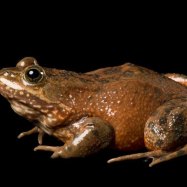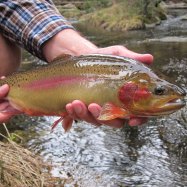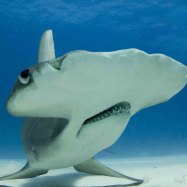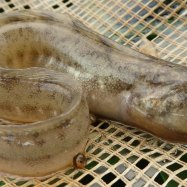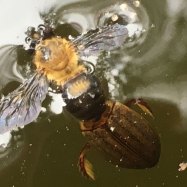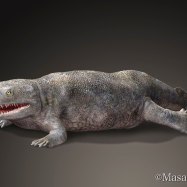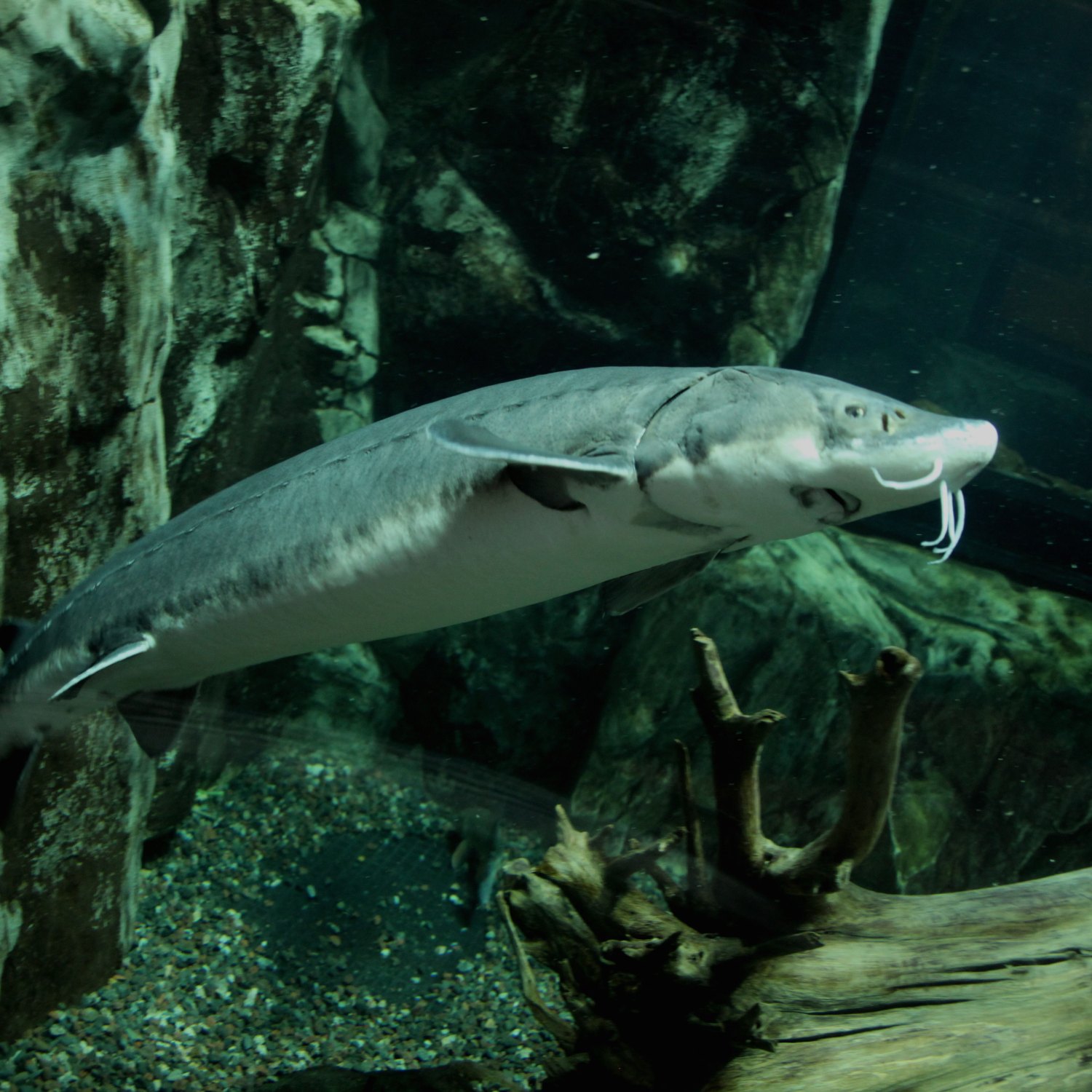
Lake Sturgeon
Up to 7 feet (2.1 meters)
The Lake Sturgeon, found in the Great Lakes and Mississippi River basin, is a unique fish with a long and cylindrical body, flattened head, and shark-like tail. These impressive creatures can reach up to 7 feet in length and belong to the Acipenseridae family. With their distinct features and large size, they are a sight to behold in their natural habitat. #LakeSturgeon #GreatLakes #MississippiRiver #Acipenseridae
Animal Details Summary:
Common Name: Lake Sturgeon
Kingdom: Animalia
Habitat: Freshwater
The Fascinating Lake Sturgeon: A Living Fossil of North America
Deep within the freshwater lakes and rivers of North America, a prehistoric creature glides silently through the depths. Its distinct appearance and behavior have captured the attention of researchers and nature enthusiasts alike. This animal is none other than the Lake Sturgeon, also known as Acipenser fulvescens.Ancient Origins
The name "sturgeon" comes from the Old French term "esturgeons," which means "to leap up Lake Sturgeon." This is in reference to their unique ability to jump out of the water when startled. Lake Sturgeons are known as living fossils, as they have existed for over 150 million years, making them one of the oldest species of fish on the planet. They have lived through the extinction of the dinosaurs and have remained virtually unchanged since then. This makes them a truly remarkable and iconic species.Scientific Classification and Habitat
Belonging to the Kingdom Animalia, Lake Sturgeons are classified under the phylum Chordata. They are a part of the Class Actinopterygii, which includes all ray-finned fishes. They are placed in the order Acipenseriformes and the family Acipenseridae, which includes all sturgeons and their close relatives.Lake Sturgeons are found exclusively in freshwater habitats, making them an important indicator of the health of the aquatic ecosystem. They can be found throughout North America, particularly in the United States and Canada Lemon Blast Ball Python. Their natural habitat includes the Great Lakes and the Mississippi River basin.
Physiology and Appearance
One of the most notable features of the Lake Sturgeon is its distinct body shape. It is long and cylindrical, with a flattened head and a shark-like tail. Its body is armored with five rows of large, bony plates known as scutes. These plates act as a form of protection for the animal, providing defense against potential predators.The coloration of Lake Sturgeons varies, but they are typically dark gray or olive-brown on the back, with a lighter gray or white underside. This coloration acts as a form of camouflage, helping the fish to blend in with its surroundings.
Size and Weight
Lake Sturgeons have an impressive size, with some individuals growing up to 7 feet in length and weighing up to 200 pounds. However, their size and weight can vary greatly depending on their age and the quality of their habitat. In general, females tend to be larger and heavier than males.Interestingly, Lake Sturgeons exhibit a phenomenon called "leaping." They have been observed jumping out of the water, soaring up to 8 feet in the air. This behavior is believed to be a form of communication, as they make a loud splash upon re-entering the water.
Feeding Habits
Being a benthivore, Lake Sturgeons have a unique feeding method. They use their sensitive barbels – whisker-like projections on their snout – to locate food on the bottom of the water. They then use their vacuum-like mouth to suck up their prey, which primarily consists of small invertebrates, fish, and plants.Lake Sturgeons are also known to engage in team feeding. They will group together and use their long, sharp snouts to stir up the sediment and uncover food, making it easier for them to feed.
Threats and Conservation Efforts
Despite their impressive resilience and longevity, Lake Sturgeons face a number of threats in their natural habitat. Overfishing, habitat destruction, and the introduction of invasive species are the major factors contributing to their decline. These pressures have resulted in a significant decrease in their population, leading to their classification as a species of "special concern" in the United States and "endangered" in Canada.Fortunately, conservation efforts are underway to protect and preserve this iconic species. These include monitoring and regulating fishing practices, restoring and protecting their habitats, and promoting public awareness and education about the importance of Lake Sturgeons in the ecosystem.
The Importance of Lake Sturgeons
Aside from being a fascinating and ancient species, Lake Sturgeons play a crucial role in their ecosystem. As bottom feeders, they help control the populations of smaller fish and invertebrates, preventing them from overwhelming the freshwater system. They also act as an indicator species, providing insight into the overall health of their habitat.In addition, Lake Sturgeons have cultural and economic importance. They hold a significant place in indigenous communities, representing a traditional food source and playing a role in cultural ceremonies. They are also valuable to the fishing industry, with their large size and mild flavor making them a delicacy in some regions.
Conclusion
In conclusion, the Lake Sturgeon is a remarkable and ancient species that continues to thrive in the freshwater habitats of North America. Its unique appearance, behavior, and biology make it an important and fascinating subject of study for scientists and nature enthusiasts alike. Although facing threats, conservation efforts are in place to ensure the survival of this living fossil for generations to come. The next time you spot a Lake Sturgeon gliding gracefully through the water, take a moment to appreciate this incredible creature and its role in the complex freshwater ecosystem.

Lake Sturgeon
Animal Details Lake Sturgeon - Scientific Name: Acipenser fulvescens
- Category: Animals L
- Scientific Name: Acipenser fulvescens
- Common Name: Lake Sturgeon
- Kingdom: Animalia
- Phylum: Chordata
- Class: Actinopterygii
- Order: Acipenseriformes
- Family: Acipenseridae
- Habitat: Freshwater
- Feeding Method: Benthivore
- Geographical Distribution: North America
- Country of Origin: United States, Canada
- Location: Great Lakes, Mississippi River basin
- Animal Coloration: Dark gray or olive-brown on the back, lighter gray or white on the belly
- Body Shape: Long and cylindrical with a flattened head and a shark-like tail
- Length: Up to 7 feet (2.1 meters)
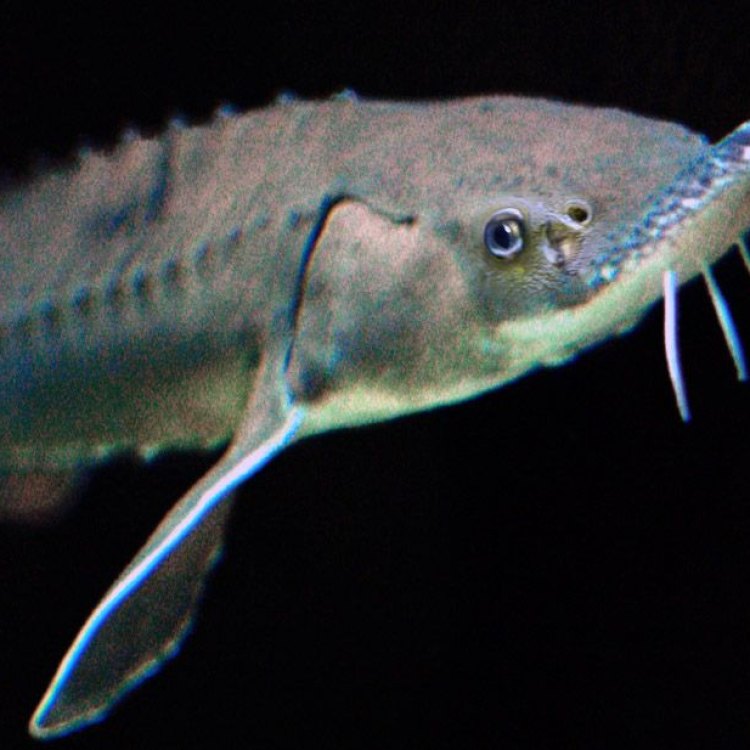
Lake Sturgeon
- Adult Size: Commonly reach lengths of 4 to 5 feet (1.2 to 1.5 meters)
- Average Lifespan: Up to 100 years
- Reproduction: Sexual reproduction
- Reproductive Behavior: Migratory behavior for spawning
- Sound or Call: Males make a drumming sound during spawning
- Migration Pattern: Annual migration to spawn in freshwater rivers
- Social Groups: Solitary
- Behavior: Bottom-dwelling and slow-moving
- Threats: Overfishing, habitat loss, barriers to migration, pollution
- Conservation Status: Threatened
- Impact on Ecosystem: Important ecological role as a top predator and filter feeder
- Human Use: Commercial and recreational fishing, caviar production
- Distinctive Features: Five rows of bony scutes along its body, whisker-like sensory organs called barbels
- Interesting Facts: They can live for several decades and do not reach sexual maturity until their late teens or early twenties.
- Predator: Humans, larger fish species
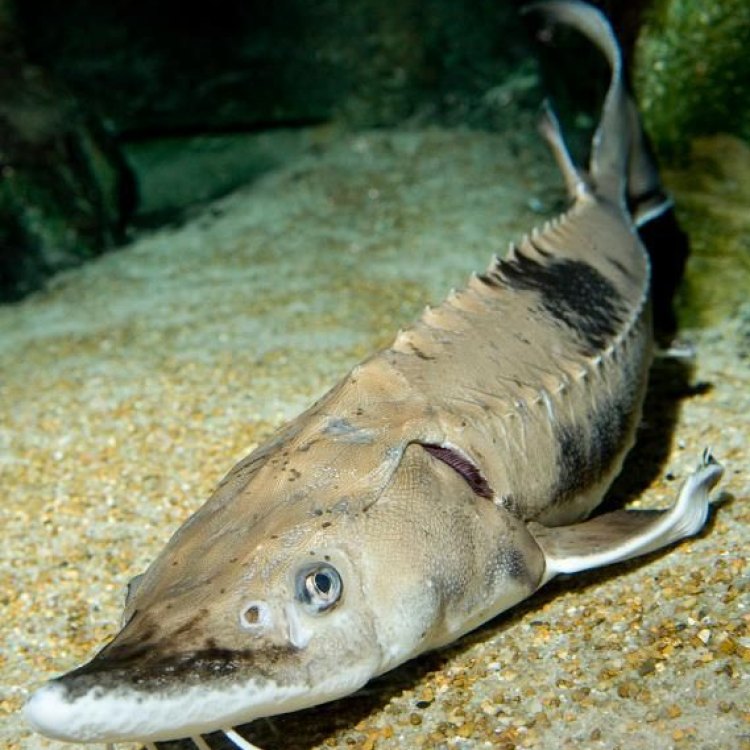
Acipenser fulvescens
The Mighty Lake Sturgeon: A Fascinating Species Facing Threats and Conservation Challenges
The graceful movements of a 5-foot long fish slowly gliding through the dark waters of a freshwater river may seem like a scene out of a fantasy novel, but this is the majestic reality of the Lake Sturgeon. This iconic fish species, found in the Great Lakes region and some freshwater rivers in North America, has captured the hearts and minds of scientists, anglers, and conservationists alike. A closer look at its unique features, behaviors, and threats faced by this species will reveal why the Lake Sturgeon is a fascinating and important animal to protect.The Physical Characteristics of Lake Sturgeon
The Lake Sturgeon (Acipenser fulvescens) is the largest and longest-lived freshwater fish in North America, commonly reaching lengths of 4 to 5 feet (1 PeaceOfAnimals.Com.2 to 1.5 meters). However, there are records of some individuals growing up to 9 feet (2.7 meters) in length and weighing over 200 pounds (90 kilograms)! These ancient-looking creatures have a slender, torpedo-shaped body with a light gray to brown color and a rough skin covered in rows of bony scutes. These five rows of bony scutes, also known as plates, run down the length of their body and provide protection from predators.One of the Lake Sturgeon's most distinctive features is its whisker-like sensory organs called barbels, which they use to detect food in the muddy bottoms of rivers and lakes. These barbels are located near the mouth and have taste buds that help the sturgeon locate prey. They have a wide, flattened snout, and their mouth is located on the underside of their body. This unique feature gives them the ability to feed while remaining close to the riverbed and avoid being swept away by strong currents during their annual migration Little Penguin.
The Life Cycle and Behavior of Lake Sturgeon
The average lifespan of a Lake Sturgeon is up to 100 years, making them one of the longest-lived species of fish in the world. They do not reach sexual maturity until their late teens or early twenties, and their reproductive process is a slow one. Lake Sturgeons reproduce through sexual reproduction, with males and females meeting in large groups during their annual migration to spawning grounds in freshwater rivers. This behavior is known as "spawning run," and it usually occurs in the spring.Male Lake Sturgeons have a unique mating ritual that involves drumming sounds to attract a female. These drumming sounds are created by rapidly contracting their swim bladder, producing a low-frequency "booming" sound. Once the female is attracted, the pair will swim together in a circular motion, releasing eggs and sperm into the water in the process. Female Lake Sturgeon can lay up to 800,000 eggs each year, but only a small percentage of those eggs will survive to adulthood.
After spawning, the adult Lake Sturgeon will start their annual migration back to their home lake. They are solitary creatures and prefer to live and feed on their own, only coming together in groups during their spawning run. As bottom-dwelling fish, they are often found in sandy or muddy substrates, where they can use their barbels to detect food such as small fish, insects, and crustaceans.
Threats to the Lake Sturgeon Population
Despite being ancient and majestic, the Lake Sturgeon population faces many threats that have led to a decline in numbers over the past century. These threats include overfishing, habitat loss, barriers to migration, and pollution.The commercial and recreational fishing of Lake Sturgeon, for their meat and caviar, has put a tremendous strain on their population. In the early 1900s, the Lake Sturgeon population in the Great Lakes region was decimated due to overfishing. Although there are now regulations in place to manage and protect the species, illegal fishing still occurs. Habitat destruction, such as the building of dams and changes in the water quality of their spawning grounds, has also impacted their population.
Another significant threat to the Lake Sturgeon is the barriers created by dams and other physical structures in rivers. As migratory fish, Lake Sturgeons rely on free-flowing rivers to reach their spawning grounds. However, dams and other structures can prevent this annual migration, ultimately impacting their reproduction and survival.
Lastly, pollution is a significant threat to the Lake Sturgeon population. As filter feeders, they are exposed to toxins, chemicals, and pollutants that can accumulate in their bodies. This can lead to decreased fertility, weakened immune systems, and even death.
The Conservation Efforts for Lake Sturgeon
With a current conservation status of "threatened," there have been ongoing efforts to protect the Lake Sturgeon population and their habitat. Many of these efforts have focused on addressing the threats previously mentioned, such as overfishing, habitat loss, and barriers to migration.Strict regulations have been put in place to manage the fishing of Lake Sturgeon, and many areas have implemented catch-and-release policies to ensure the survival of this species. Habitat restoration projects, such as dam removals, have also been crucial in allowing Lake Sturgeon to reach their spawning grounds. In some areas, special fish ladders have been built to help Lake Sturgeon navigate around dams successfully.
Efforts have also been made to reduce pollution in waterways where Lake Sturgeon reside. This includes monitoring and regulating industrial discharges, improving sewage treatment systems, and raising awareness of how individual actions can impact the environment.
The Importance of Lake Sturgeon in the Ecosystem
Beyond their cultural and economic significance, Lake Sturgeons play a crucial role in the ecosystem. As top predators, they help keep the population of smaller fish in check, preventing overpopulation and maintaining a balanced ecosystem. Their bottom-dwelling behavior also helps to stir up sediment and improve water quality, making them important contributors to maintaining the health of the freshwater rivers they inhabit.In addition to their ecological role, Lake Sturgeon have great symbolic value in the communities and cultures they are a part of. They have been an essential part of the diet and traditions of First Nations and Indigenous peoples for generations, and their presence in rivers is tied to cultural beliefs and practices.
Final Thoughts
The Lake Sturgeon is a remarkable species that has survived for millions of years, but its population is currently facing numerous challenges. With its distinctive features, unique behaviors, and significant ecological role, it is essential to protect the Lake Sturgeon and its habitat. By understanding the threats facing this species and implementing conservation efforts, we can help ensure its survival for generations to come. It is our responsibility to protect this ancient and majestic creature, not only for its own sake but also for the health of the ecosystem and the cultural value it holds in our communities.
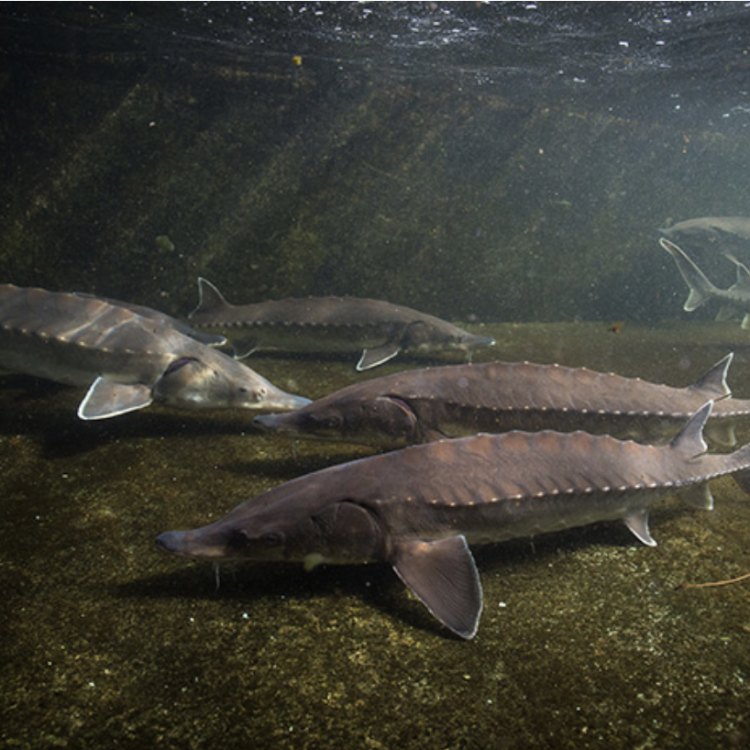
The Fascinating Lake Sturgeon: A Living Fossil of North America
Disclaimer: The content provided is for informational purposes only. We cannot guarantee the accuracy of the information on this page 100%. All information provided here may change without prior notice.

